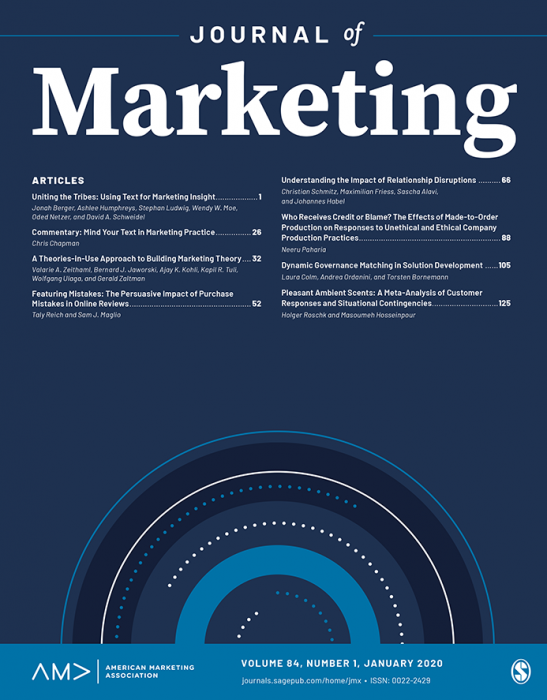EXPRESS: A Meta-Analysis of Product Visual Aesthetics
IF 10.4
1区 管理学
Q1 BUSINESS
引用次数: 0
Abstract
Despite firms’ emphasis on product visual aesthetics (PVA) for competitive advantage, questions remain regarding which aesthetic properties enhance PVA the most, the strength of PVA’s effect on consumer responses, and moderating factors. To address these gaps, the authors conduct a meta-analysis of 727 effect sizes from 263 independent samples spanning 1993-2024. Findings reveal that both organizational and meaningful aesthetic properties positively impact PVA, with harmony being the strongest property. PVA positively influences both consumer attitudes and behaviors. The authors develop a comprehensive framework of moderators across five key groups: brand, product, communication, consumer, and environmental factors. The moderator analyses yield multiple important insights and (1) identify economic growth and consumption publicity as particularly influential; (2) recognize previously unexplored but relevant moderators (e.g., aesthetic object type, individualism, and income inequality); (3) clarify debated moderators (e.g., brand familiarity, product quality level, and gender); (4) reveal that certain moderator combinations can turn PVA effects negative. For instance, focusing on packaging aesthetics with utilitarian, private, non-durable, and low-quality products can turn the effect of PVA on attitudes negative; and (5) find an attitude-behavior gap in the moderating effects of PVA. The study provides new insights into the nuanced effects of PVA for effective application.EXPRESS:产品视觉美学的元分析
尽管企业强调产品视觉美学(PVA)的竞争优势,问题仍然是关于哪种美学特性增强PVA最,PVA对消费者反应的影响强度,以及调节因素。为了解决这些差距,作者对1993-2024年间263个独立样本的727个效应量进行了荟萃分析。研究结果表明,组织和有意义的美学属性都对PVA有积极影响,其中和谐是最强的属性。PVA对消费者态度和行为都有积极的影响。作者开发了一个综合框架的调节在五个关键组:品牌,产品,沟通,消费者和环境因素。调节分析产生了多个重要的见解,并且(1)确定经济增长和消费宣传具有特别的影响力;(2)认识到以前未探索但相关的调节因素(例如,审美对象类型,个人主义和收入不平等);(3)澄清有争议的调节因素(如品牌熟悉度、产品质量水平和性别);(4)揭示了某些调节剂组合可以使PVA效应变为负向。例如,注重包装美学与实用,私人,非耐用,低质量的产品可以扭转PVA对态度的负面影响;(5)发现PVA的调节作用存在态度-行为差异。该研究为PVA的有效应用提供了新的见解。
本文章由计算机程序翻译,如有差异,请以英文原文为准。
求助全文
约1分钟内获得全文
求助全文
来源期刊

Journal of Marketing
BUSINESS-
CiteScore
24.10
自引率
5.40%
发文量
49
期刊介绍:
Founded in 1936,the Journal of Marketing (JM) serves as a premier outlet for substantive research in marketing. JM is dedicated to developing and disseminating knowledge about real-world marketing questions, catering to scholars, educators, managers, policy makers, consumers, and other global societal stakeholders. Over the years,JM has played a crucial role in shaping the content and boundaries of the marketing discipline.
 求助内容:
求助内容: 应助结果提醒方式:
应助结果提醒方式:


